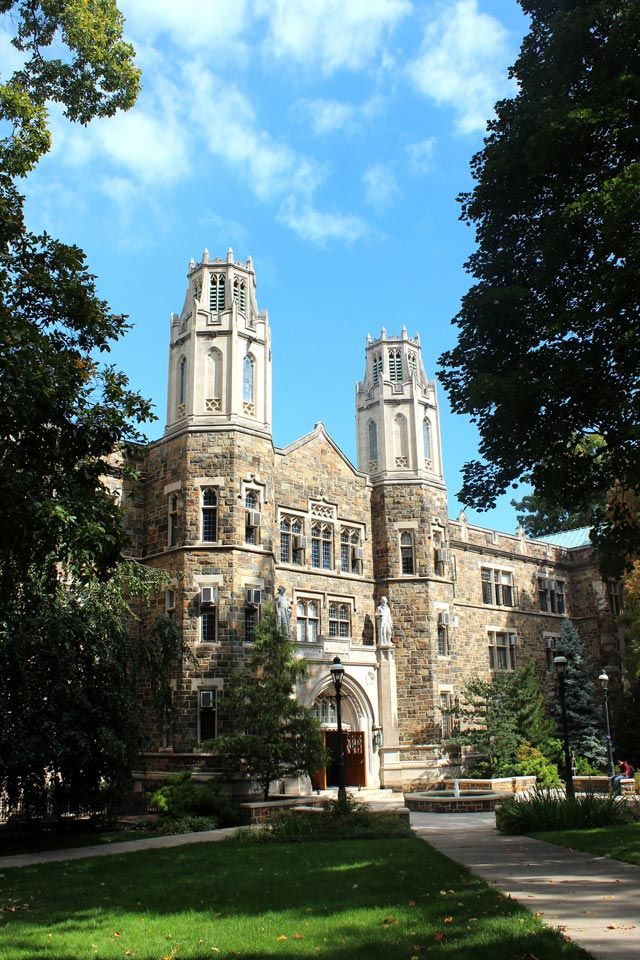Bioengineering and religion. Computer science and graphic design. Industrial engineering and international relations.
It’s not easy to combine such diverse interests as these. But with the Integrated Degree in Engineering, Arts and Sciences (IDEAS), students at Lehigh are doing just that. Jointly administered by the College of Arts and Sciences and the P.C. Rossin College of Engineering and Applied Science, IDEAS is a four-year honors program that allows students to get a bachelor's degree with heavy concentrations in both colleges.
On the one hand, the program attracts students whose first love is engineering, but who also feel passionate about the arts and sciences. Yet IDEAS is also perfect for those initially drawn to the arts and sciences, but who understand the importance and practicality of a strong technical background gained through engineering.
That said, IDEAS is not the only program at Lehigh that spans engineering and the College of Arts and Sciences. The five-year Arts and Engineering program provides students with a professional engineering education and also allows them to study a second field. But IDEAS is unique in that it allows students to integrate very different fields of endeavor into a single program of study.
“I liked the flexibility of my classes and the fact that I combined two completely different majors into one theme,” says Kara Werner ’11. “That's something that is really hard to find at other universities.”
Werner was drawn to Lehigh because of the university’s strong international relationsdepartment. But after she was invited to join the IDEAS program, she added courses in industrial engineering. In combining the two, her thesis examined how industrial engineering techniques can improve the efficiency of non-governmental agencies (NGOs) doing work in the developing world.
In a nutshell, here’s how IDEAS works: In the first and second years of the program, you take seminars that draw on many different disciplines. Among other things, this helps you get used to thinking beyond the boundaries of traditional academic fields. In the final two years, you focus on a senior thesis project that combines both of your concentrations. Along the way, you work closely with advisers to develop a coursework and thesis gameplan. What’s more, you can choose from all the courses offered in both colleges.
So the program is flexible, but it’s definitely not easy. Anything but. You must maintain a 3.25 grade point average, and be a self-starter with the confidence and wherewithal to quite literally create your own program of study.
“Many schools have tried programs like this, but a lot of them turn out to be degrees in introductory studies,” says William Best, professor of practice in electrical and computer engineering. Best co-directs the program with Bruce Thomas, associate professor of art and architecture.
“Students in Lehigh’s program are essentially building a product,” says Best. “They’re designing their own degree. We meet with each student every semester to develop a ‘flight plan.’ It is a challenging process for them, but they don't do it alone.”
Developing an IDEAS major is especially challenging because students often integrate two very different disciplines to form the final project.
For example, Jim Pratt ’11 combined computer science and graphic design by building a computer game to help people with disabilities make the most out of their lives.
“The program was an extremely valuable experience for me,” says Pratt. “You have to deal with these types of challenges in real life all the time, where you’re not given specific directions and need to figure things out by yourself. IDEAS gave me practice doing that.”
Along with learning to be flexible and integrating different disciplines, students in the program benefit from seeing the world in two very different ways: as arts and sciences majors, and as engineers.
“The main thing I’m taking from engineering is how to solve complex problems by breaking them into smaller, more manageable pieces,” explains Colin Przybylowski ’11, who combined bioengineering and molecular biology and is entering medical school in the fall. “As a doctor, when you’re dealing with a patient and trying to figure out what's wrong with him or her, you’re thinking like an engineer,” says Przybylowski.
While Przybylowski’s concentrations were relatively similar, Dannielle Pimental ’11 combined her interest in bioengineering with religion. Her thesis focused on how Jewish beliefs affect end-of-life decisions in Israel. Pimental plans to pursue a master’s degree in religion at the Hebrew University in Israel before attending medical school.
“My arts and sciences focus improved my writing ability, and my engineering classes expanded my thinking in ways I never would have expected,” Pimental says. “I don’t think I would have gotten as good an education anywhere else as I did in the IDEAS program.”

